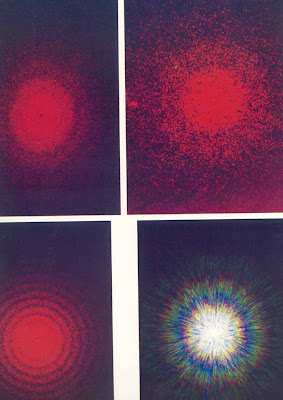

Natural phenomena are not susceptible to explanation, they can only be described. One of such phenomenon was prof C V Raman who liked to be described himself as a co-traveler of light, colour and beauty. His 65 years long deep relationship with nature during the period of 1905 to 1970 had a strong foundation on the cosmic boon of sound and light.
Fusion of light and sound with spatiotemporal modifications resulted into the emergence of natural beauty, which was always an illuminating lighthouse for scientists, artists and literary workers. Both arts and science are the keys, which can open the inner corridors of Nature's secrets. The scientists who study Nature through observations and experiments and the poet who describes the astonishing spectacle enacted in the grand theatre of the Universe are pilgrims progressing along parallel roads aiming at the realization of truth. C V Raman was on such pilgrimage.
Raman Effect is a phenomenon which is known after a person which influences maximum number of diverse fields like physics, chemistry, biology, medicine, archeology, geology, agriculture, forensic science, communication engineering, computing, laser technology etc.In fact there doesn't exist not much areas which are not influenced by Raman Effect.
Invention of various types of lasers during sixties enhanced the horizon of Raman Effect and a number of new terminologies started taking shape in the dictionary of science and technology. On this National Science Day, which remembers the discovery of RE, it, is quite appropriate to recollect Raman and his work.
C.V Raman was a recipient of Nobel Prize in 1930. In his early years, he received education at Tiruchirapalli in south India, and later passed the Indian Civil Service Examination. He started his career as a professor at the University College of Science Calcutta. He was a brilliant personality, he believed in Gandhian philosophy and the will power. One of his greatest achievements was the discovery of the 'Raman Effect' involving the scattering phenomenon of light.
C.V. Raman was born on November 7, 1888, near Tiruchirapalli in south India. He was the second child of a local schoolteacher, Chandrasekhar Iyer, and his wife Parvathi Ammal, who had eight children- five sons and three daughters. When he was four, Raman’s father took up the position of a mathematics and physics teacher in the coastal town of Vishakapatnam. The presence of a large number of books on physics, mathematics and philosophy at home aroused Raman'’ interest in science and he used to study books far in advance of his age. He was also very fond of conducting experiments with improvised apparatus at home and at school.
At the age of 11, Raman finished his matriculation and joined Presidency College on a scholarship. He passed B.A when he was only 15 years, winning gold medals in English and Physics. At college, Raman spent a considerable time studying Lord Raleigh’s scientific papers and the latest science journals. He published a paper in The Philosophical Magazine (London) in 1906 on the subject of diffraction of light bands, which he had observed while measuring the angle of a prism, using the college spectrometer. He learnt much about research from Helmholtz’s Sensations of Tone and ventured into experimental research in the college lab where no previous research had been done in physics. He also corresponded with Lord Raleigh, who was then the president of the Royal Society.
Saturday, February 28, 2009
Prof C V Raman : A Co-traveler of light, colour and beauty.
Posted by Meenu Khare at 12:00 AM
Labels: meenu khare, Raman, Raman Effect, science is interesting
Subscribe to:
Post Comments (Atom)




1 Comment:
very informative . your present post is tribute to Dr, Raman on National Science day .
Post a Comment